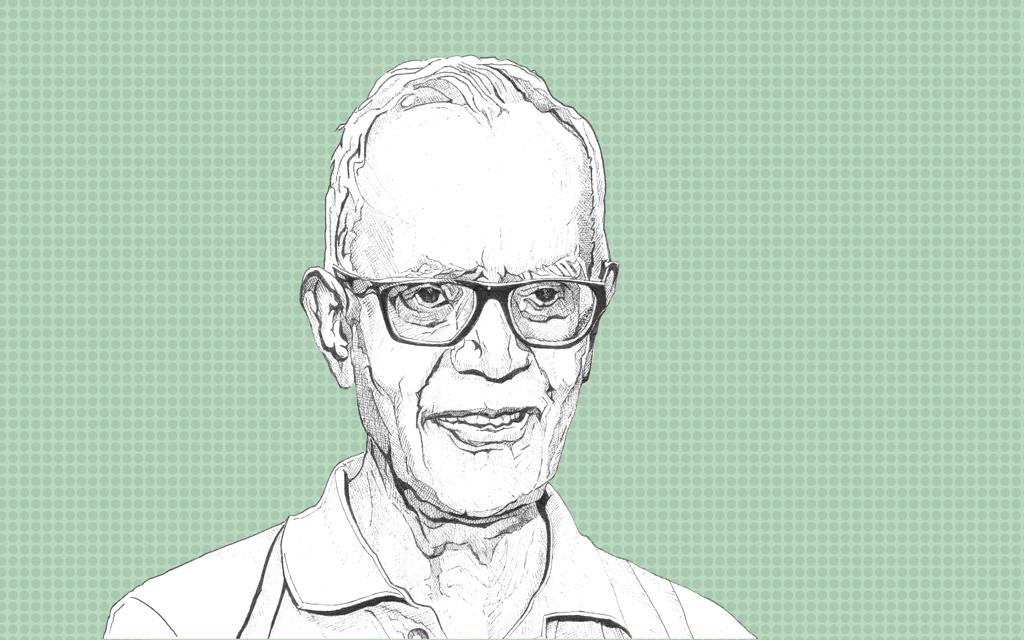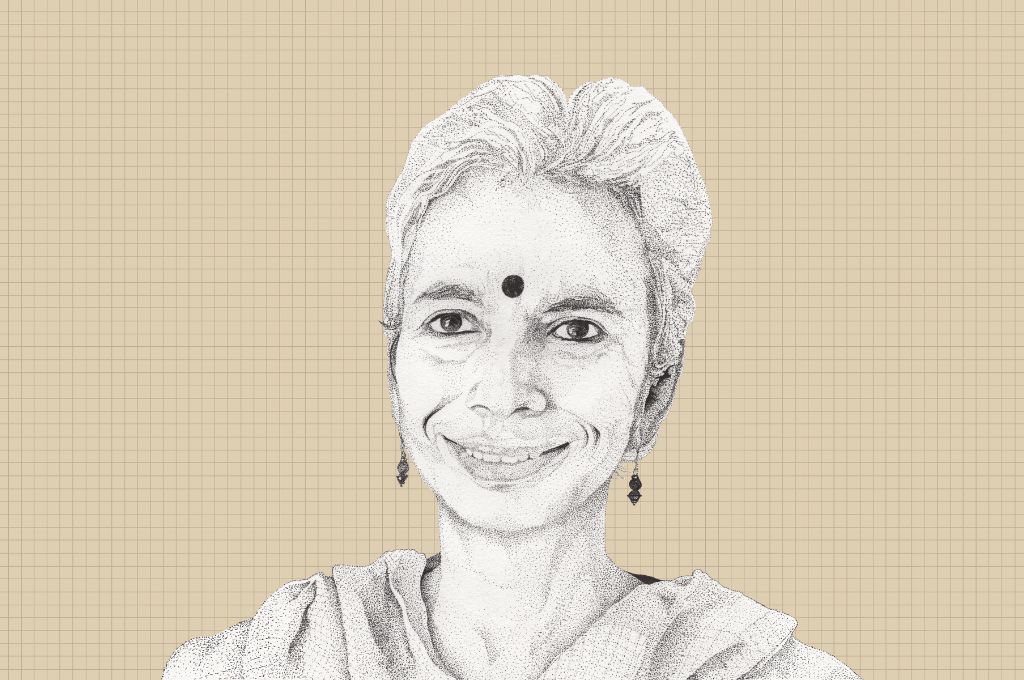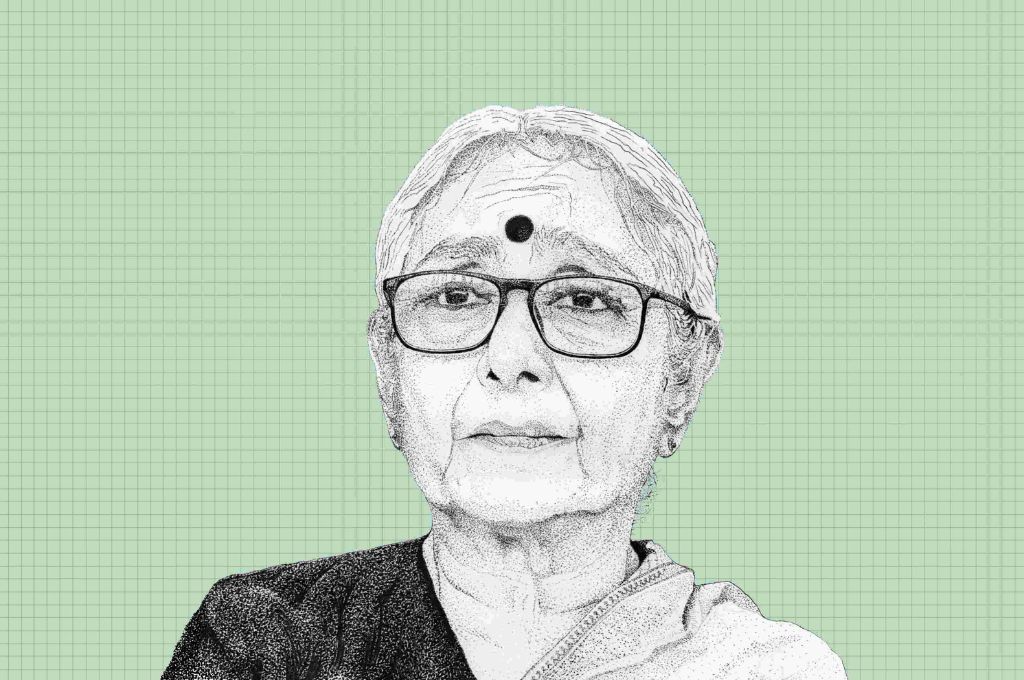On October 8th, 2020 the National Investigation Agency arrested Stan Swamy in connection with the ongoing Elgar Parishad case. Watch this video in which Stan talks about the context within which his activism for Adivasi rights has been questioned. Also, read this statement in which Stan asks, “What is the ‘crime’ I’m supposed to have committed.”
*This article was updated on October 9th, 2020 at 11 AM IST.
Stan Swamy is an activist, a social worker and a Jesuit priest who has spent many decades fighting for the rights of Adivasis in Jharkhand. He is a founder member of the Visthapan Virodhi Jan Vikas Andolan, a peoples’ movement against displacement.
In this interview with IDR, Stan discusses the emergence and growth of people’s movements, his work with young Adivasi undertrials who are falsely accused of being Naxalites and the difficult choices that confront young Adivasis today.
What brought you to Jharkhand?
I’m originally from Tamil Nadu and when I became a Jesuit priest, I didn’t want to remain in the South; it already has too many priests. I felt that there must be a greater need elsewhere. With the help of some friends, I came to know of the indigenous Adivasi peoples in central India–a place where despite the tremendous natural wealth in the region, the people were very poor. I was 20 years old at that time and this was all I knew.
Despite the tremendous natural wealth in the region, the people were very poor.
I arrived in the district of Singhbhum and was assigned to teach in a tribal boys high school. I wanted to learn more about my students, and so I spent my holidays with them–going from one village to another, meeting people, speaking to them and getting to know them.
In one such village, I was staying at a student’s home during mango season. One morning, we were sitting in their courtyard, under a mango tree, filled with fruits. My student’s father pointed to a few branches of the tree and asked him to bring down all the fruits that were ripe. The boy did as he was told, and we enjoyed some of the fruits together. But my attention was drawn to a branch of the tree, which was still laden with ripe mangoes. The boy’s father had not asked him to pluck any fruits from that branch, and I thought that perhaps he had failed to notice it. So, I plucked up some courage, pointed to the branch and said, “There are plenty of ripe fruits on this branch. Why didn’t you ask your son to pick those too?” He responded very simply, saying, “Those are fruits for the birds of the air. Nature has given freely, and so, we share freely”.
This incident forced me to question my value system. I spent a few more years during my 20s with Adivasis–learning their language, understanding their lives, their economy and their social setup. I then went abroad for further studies and returned to work at the Indian Social Institute in Bangalore. But I returned to Jharkhand and its Adivasi peoples in 1990.

Could you speak a little about the work you’ve been doing over the past several years?
I’ve been involved in the emergence of some of the people’s movements that Jharkhand has witnessed over the last few decades. One of the main issues we see is that people are being displaced because they live on lands that are rich in mineral resources.
An Adivasi will say, “jaan denge, par zameen nahi denge!” (I will give up my life, but I will not give up my land). But it isn’t enough to say this. So, I have been working with young Adivasis to help them better understand the dynamics of the society we now live in and develop strategies to resist displacement and save their lands.
A related issue is that young people who resist displacement of their land or their villages are accused of being Naxalites or Maoists, and arrested. Since you can’t really rely on the information that is reported in the newspapers, we decided to conduct a study to understand the situation of undertrials in Jharkhand.
We visited 18 districts in the state and spoke to 102 alleged Naxalite undertrials. Ninety-seven percent of our respondents reiterated that they had not committed the crimes attributed to them by the police. Through our study it was evident that in the current system, justice is beyond the means of most of those who have been falsely accused. Once they have been implicated in these cases, the threat of persecution in the form of harassment, intimidation, or re-arrest persists even after accused persons are released on bail. The study also exposed the deliberate misuse of criminal justice procedures to repress alleged Naxalite undertrials in Jharkhand’s jails.
It isn’t just enough to learn about the reality of the situation. You have to act on it.
We estimate that there are at least 3,000 young Adivasis and another 2,000 Dalits languishing in Jharkhand’s jails; this is a large number of undertrials for a small state. And, it isn’t just enough to learn about the reality of the situation. You have to act on it. So, I filed a public interest litigation (PIL) against the Government of Jharkhand in the Jharkhand High Court, demanding speedy trials and information about undertrials in the state. The High Court ordered the state to furnish all the relevant information from each and every jail in Jharkhand in January 2018.
There have been several hearings and each time the state will say that one or two undertrials have been released. But we have not received any of the information that we seek and this is because the state has much to hide.
Where does the support for these movements come from?
These movements are primarily driven and supported by the community itself. Let me give you an example. In the 1990s, the government wanted to construct two large dams across the Koel and Karo rivers in Ranchi district. This project would have submerged 132 villages, 50,000 acres of agricultural land and 20,000 acres of forest land. Naturally, people opposed this.
The entire community organised itself under their traditional leadership. They took out massive rallies, walking for hours on end, from village to village to organise the community against the construction of these dams. They conducted aam sabhas (community meetings). But, how do you convey this message when there is no media that can be used? Remember, this was in the 90s.
Well, there’s a particular beat of the drum and when one village played this beat, the neighbouring village heard it and repeated the same beat. This was then heard by the next village and within a few hours, they had conveyed the message to 70 villages. And the very next day, the community gathered, and each person brought with them ek mukki chawal, ek rupya paisa (a handful of rice and one rupee). This is how the movement came together and the community supported itself to resist displacement. They neither asked for nor accepted any financial help from outside.
The movement reached a climax on 2nd February, 2001, when the police opened fire at an aam sabha in the village of Tapkara, where 5,000 people had gathered. Eight people were killed and many more were handicapped for life. The state thought that this would frighten the Adivasis into abandoning the movement, but it had the opposite effect–people said we’ve shed our blood, there’s nothing more to lose–and the movement only became stronger.
Are you seeing things changing as a new wave of younger Adivasis come to the fore?
There are many young Adivasis who have been educated and have good jobs, have built a house in Ranchi, and send their children to English medium schools. But they have severed ties with the villages they come from.
The ones who have stayed behind cannot stand up and resist; if they do, they are put in jail.
The ones who have stayed behind cannot stand up and resist; if they do, they are put in jail. It’s a difficult choice for them. The young men say, “I cannot bear to stay back in the village and see my land being taken away; but if I resist, I’ll be thrown into jail. Let me instead leave this place, go elsewhere and earn money for my family.”
This leads us to another situation: migration. Many young Adivasis are migrating, especially towards the southern states, and much of this migration is because their land is being taken away from them. Despite the fact that Jharkhand has protective laws that safeguard land rights of the Adivasis such as the Chotanagpur Tenancy Act and the Land Acquisition Act of 2013, there is a great deal of forcible land acquisition taking place.
When the youth stand up against this, they are putting themselves at risk of being arrested and staying in jail for years without a trial.
But the young are still resisting?
When your land and your home are forcibly taken away, are you going to sit quietly? You are definitely going to stand up. There is resistance, but it isn’t organised such that the community as a whole stands by it.
So, we have created the Visthapan Virodhi Jan Vikas Andolan, a peoples’ movement against displacement, of which I am a founder member. While we have successfully fought some cases through people’s mobilisation, we have also failed in others, because of the brutal repression of state.
While we have successfully fought some cases through people’s mobilisation, we have also failed in others, because of the brutal repression of state.
There are others who are doing this too, and leaders have emerged among them. Take the case of Dayamani Barla. She is from the Munda tribe and has played a terrific role in leading the community in the fight for land rights. When ArcelorMittal wanted to set up a steel plant in Gumla-Khunti, the state government wrote off 12,000 acres of land without any consultation with the inhabitants of that land. Dayamani went from village to village, creating awareness about what was happening and leading a campaign against the displacement of Adivasis from their own land.
When ArcelorMittal realised that they could not acquire the land forcibly, they tried other means. Brand new ambulances that were fully equipped and staffed with doctors and nurses started making their way to these villages, offering free services. The community knew exactly why this was happening and sent them packing. This is a very telling move for poor people who are in need of health services. Finally, ArcelorMittal tried to negotiate them down from 12,000 acres to 800 acres, but the people refused to give them an inch of land and eventually they had to leave.






